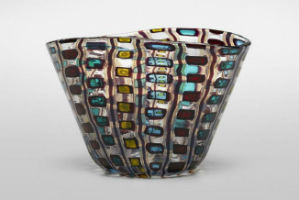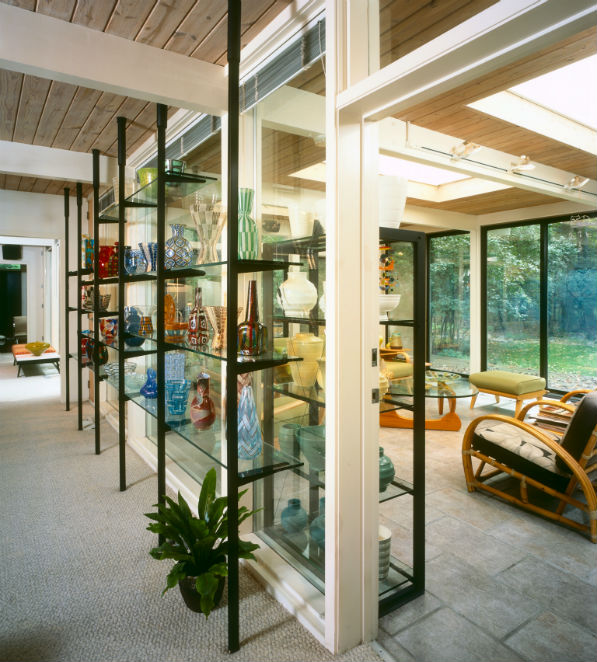
NEW YORK – The tradition of glassmaking in Murano, Italy, goes back to the 13th century but a particularly innovative and peak time for art glass there was after World War II into the 1950s-60s as the modernism movement came into vogue.
There were large and small glassworking operations on Murano, a group of islands in the Venetian Lagoon, but a handful of companies and designers were consistently at the top of most collectors’ lists—then and now—as their pieces were noted for their technical and aesthetic mastery.
An important private collection in this genre was assembled by a Chicago couple after visiting Italy in the early 1990s and coming across the Venini glassworks on Murano (Wright auction, May 23, 2018). The collection reflects the couple’s passion for the exuberant design and culture of the postwar period, which was well suited to their modernist-style home in Chicago, itself a mecca for modernism.
The collection highlights pieces by Fulvio Bianconi for Venini, Ercole Barovier for Barovier & Toso and Dino Martens for Aureliano Toso. Standouts in the auction included a fine Con Macchie vase designed by Fulvio Bianconi for Venini and originally owned by Kitty Baldwin Weese, co-founder of the renowned Baldwin Kingrey Gallery in Chicago.
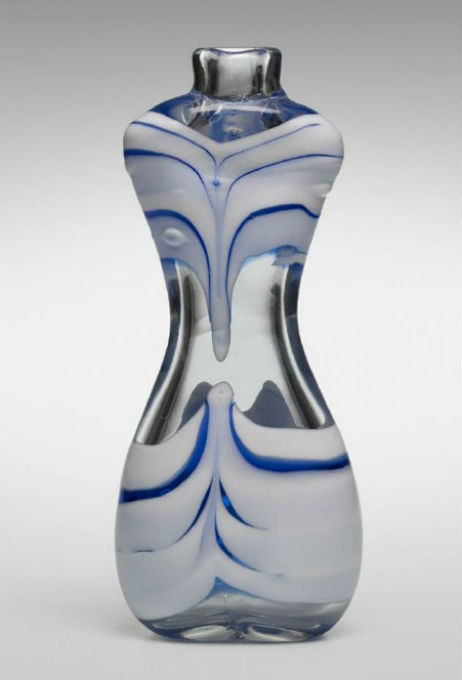
The Venini portion of the sale also features an exhaustive compilation of Bianconi’s renowned Pezzati, Spichhi and Fasci works. A thorough grouping of geometric designs by Ercole Barovier features rare works, including an unparalleled and monumental five-color Intarsio vase. Important works by Dino Martens for Aureliano Toso include a rare and elegant Oriente Geltrude vase as well as several examples from the Eldorado series, and a rippling Sirventese vase.
Postwar Murano glass of the ’50s and ’60s was deeply influenced by contemporary art, including American abstract expressionist painting, Op-Art and color field painting. Contemporary fashion and graphic design were also important during this period.
“Overall, Murano glass designers were allowing themselves to be influenced by world art trends, especially American art and design,” said Jim Oliveira, who co-curated the aforementioned Wright auction with Sara Blumberg. “The vibrant colors and patterns which define Murano glass in the postwar years reflect the optimism of the era, a time when Europe was rebuilding its infrastructure and young Americans returning from the war were rebuilding their lives. The United States also became the largest market for Murano glass in the postwar years, and this fact was not lost on enterprising factory owners, including (and especially) Paolo Venini, whose vibrant postwar production appealed, very intentionally, to the American market.
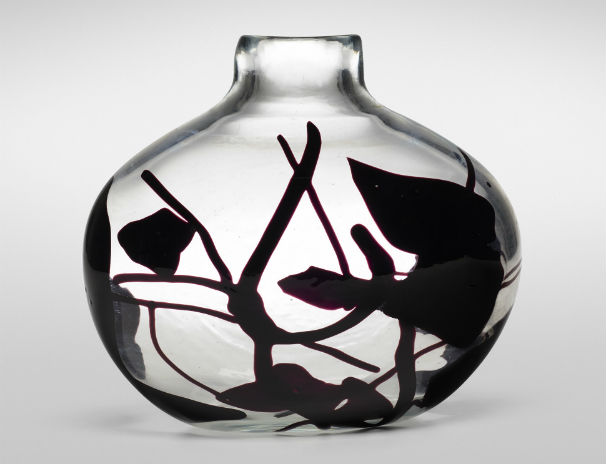
“Fulvio Bianconi’s work for Venini during this period is perhaps the most significant. The vibrant colors and dynamic patterning of the Pezzato (patchwork), Fasce (striped) and Con Macchie (stained) series have become icons of 20th century design and perfectly capture the zeitgeist of the postwar years,” added Oliveira.
The Venini company, starting with Paolo Venini, broke with old traditions and revolutionized the making of art glass. The Milanese lawyer was deeply influenced by European modernism and deliberately set out from the start, to enlist contemporary artists, architects and designers to work directly with Murano’s best craftsmen in order to create a new genre of Murano glass.
His first glass designer, the painter Vittorio Zecchin, drew inspiration from classical Murano vases found in Venetian masterwork paintings from the 16th century.
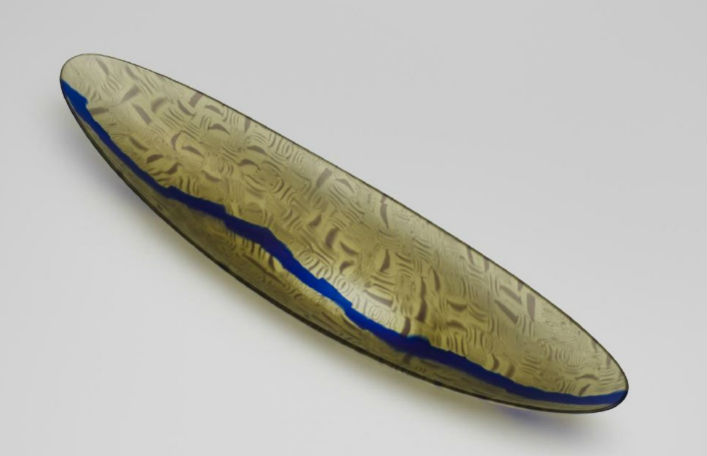
“Zecchin’s Soffiato vessels were made of thin transparent glass executed in monochromatic, gem-tone colors and were stripped of all ornamentation except for elegantly rendered handles and lip and foot details which served to accentuate the reduced geometry of the forms,” said Oliveira. “This was a new and modern direction for Murano glass and served as a blueprint for Venini’s future production—reduced and elegant modernist forms executed with new and experimental glassmaking techniques. Paolo Venini also understood branding and advertising as we understand it today, and from the beginning successfully promoted his company as ‘modern.’”
Also highly collectible—and groundbreaking—were wares made by the Barovier family. “Members of the family are indeed responsible for an incredible number of glassblowing innovations, including the development of the first truly clear glass, Cristalo, which was developed by Angelo Barovier in 1450,” said Oliveira. “During the last quarter of the 19th century, Giuseppe Barovier distinguishes himself as perhaps the greatest glassblower in history. His utter mastery of every known Venetian glassblowing technique, along with new innovations, including the blown murrine technique, have lasting influence in the production of art glass worldwide. In the 20th century, Ercole Barovier, as owner and principal designer for the Barovier firm, becomes the most prominent and influential member of the family.”
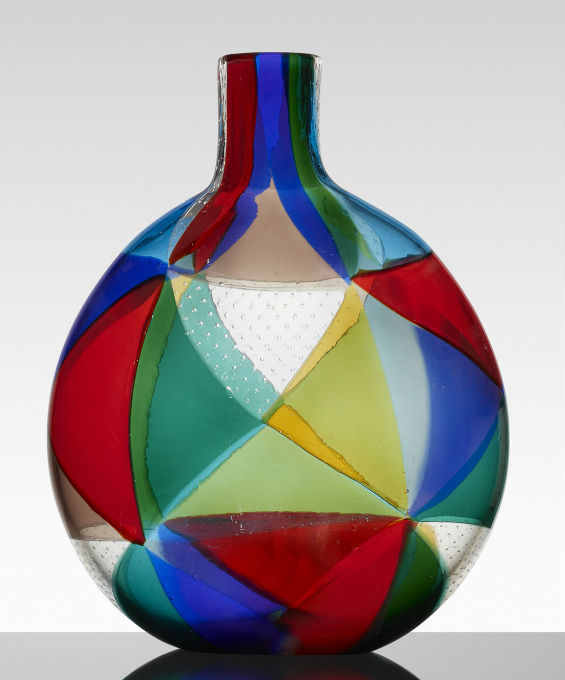
In an essay in the auction catalog, Oliveira describes the Barovier company and Ercole’s contribution: “Existing as a counterbalance to the international modernism of Venini, the Barovier firm had roots that could be traced back to the 13th century. As owner and principal designer of the company for almost 50 years, Ercole Barovier was a force majeure, both as an entrepreneur and artist.”
“Designing thousands of models during his tenure, Ercole was particularly adept at combining traditional Murano glassblowing techniques with contemporary trends in art and design. From the late ’20s until his retirement in 1972, he produced an astonishing array of award-winning designs and series. During the postwar period, he too focused on strong colors and graphic patterning, but unlike the free-form designs of Bianconi, Ercole’s compositions were sharply linear, geometric and highly structured. This approach, combined with his choice of elegant, simplified forms, created visually powerful glass vessels and objects of lasting appeal,” the essay continued.
“The Intarsio works are perhaps Ercole Barovier’s most successful and well known of his postwar series. Composed of often brightly colored triangular shaped Tessere, these pieces are the modernist descendants of the famous murrine vessels designed by Ercole, his brother Niccolo and uncle Giuseppe in the 1920s. As such, the Tessere are excellent examples of Ercole’s ability to repurpose materials, techniques, ideas and designs from his family’s long history and adapt them to contemporary taste. Beyond this, the Intarsio have a visceral, archetypal appeal and continue to feel timeless in every sense.”
Among the pioneering designers represented in the Chicago collection—and highly regarded by other astute art glass aficionados—is the work of Dino Martens, who is probably best known for his Oriente and El Dorado series. His striking Mezza Filigrana pieces also represent a significant part of his work for Aurielano Toso.
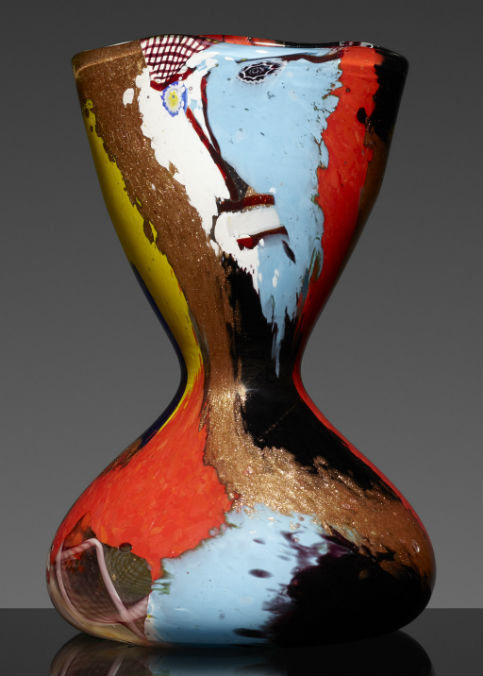
“The reason the Mezza Filigrana pieces are so striking is probably due to the dynamic visual complexity of the filligrana technique compressed within Martens’ simple, but sculptural, forms,” said Oliveira.
As for the El Dorado and Oriente series, he described them in the catalog as significant in the history of postwar Murano glass. “His dramatic use of exploded imagery, cane fragments and spiral pinwheels executed in bright colors and asymmetrical forms was undoubtedly informed by American Ab-Ex painting, and in some ways anticipated the imagery and brio of psychedelic art. The Eldorado and Oriente series, in particular, have become icons of ’50s design and together they form an outer-edge of postwar Murano glass.”
Also making a major contribution to glassmaking here was the Seguso family.
“Seguso has always been a great company and their best work is equal to that of Venini and Barovier in every way. Seguso has, at times, suffered from the idea that they were number three—Venini was the “modern” company, (No. 1), Barovier the “traditional” company, (No. 2), and Seguso No. 3 by default,” Oliveira said. “But this was always more a problem of perception rather than the reality of the situation. For example, the designer Flavio Poli with all of his work for Seguso is important to the history of Murano glass. Poli’s development of Sommerso glass is especially significant. In it, we see the influence of Scandinavian glass in the use of streamlined organic forms with submerged layers of transparent glass, but the color sensibility and variety of forms are entirely Venetian. And Sommerso is just one example of Poli’s dextrous ability as a glass designer.”
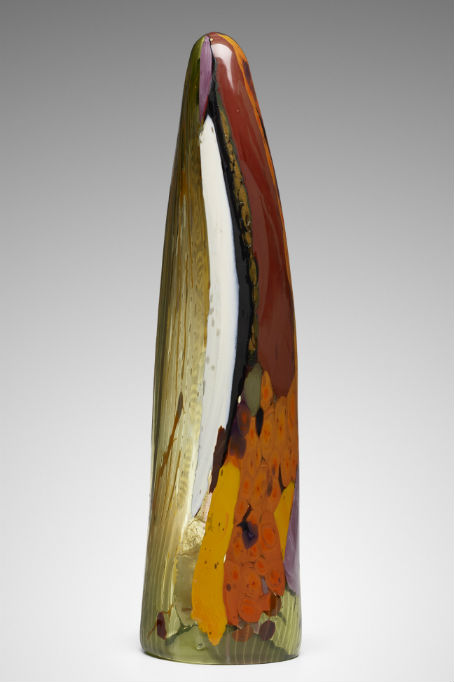
Not all glassblowers here were Italian-born. The American Thomas Stearns is represented by several brilliant pieces in the Chicago collection. “With a masterful collection well underway, the decision was made to include several important works by the American artist Thomas Stearns,” wrote Blumberg in a catalog essay. “While his tenure at Venini spanned a brief two- year period, Thomas Stearns’ work is now understood to be some of the most unique and influential in the history of glassmaking. With the acquisition of Stearns’ La Sentinella di Venezia, a masterwork of artistic expression and one of only two examples in existence, a crown of the greatest rarity was placed on this vibrant collection.”
These masterworks of Murano glass tell a story of the enthusiasm and innovation of postwar design, achieving glorious heights rarely reached since.
[av_button label=’View the fully illustrated catalog and bid on LiveAuctioneers.’ link=’manually,https://bit.ly/2HuO6ZG’ link_target=’_blank’ size=’medium’ position=’center’ icon_select=’no’ icon=’ue800′ font=’entypo-fontello’ color=’theme-color’ custom_bg=’#444444′ custom_font=’#ffffff’ admin_preview_bg=” av_uid=’av-uf6o0z’]


